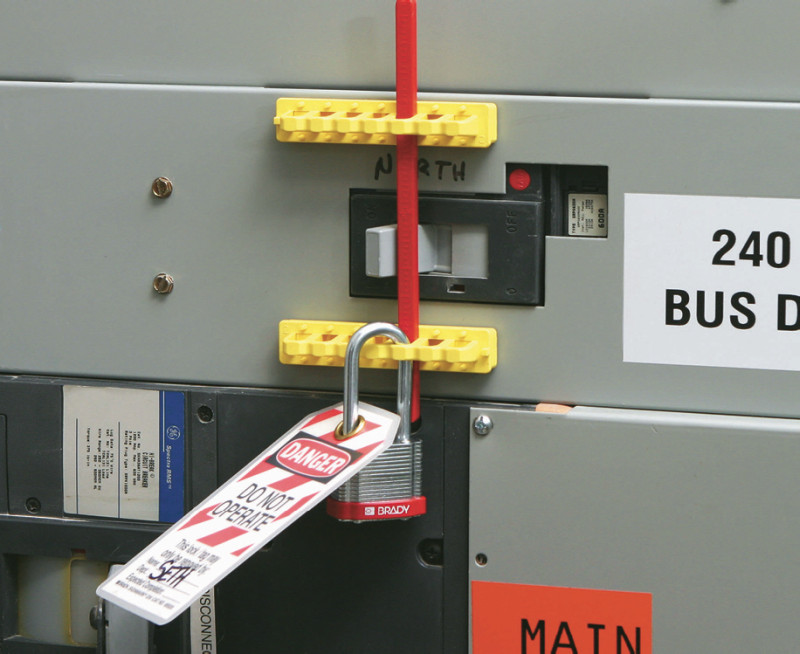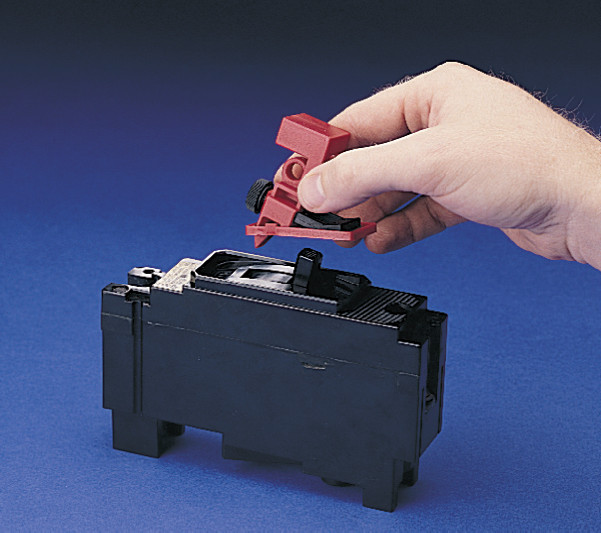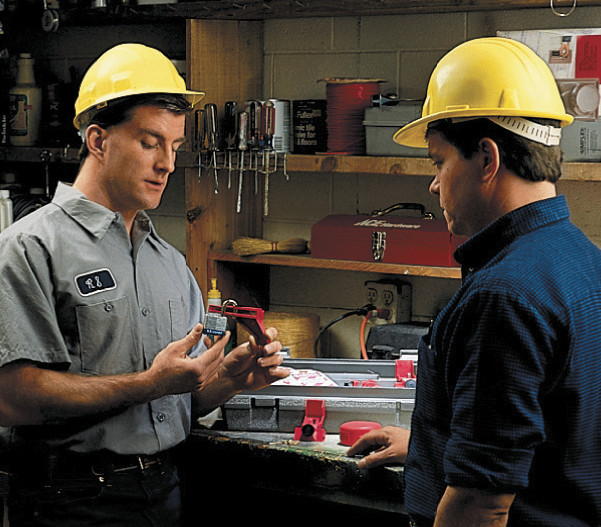 At a trade show recently, Brady’s Liz Gallagher was struck by how many people were interested in electrical lockout. She says this is unusual because you usually associate LO/TO with big mechanical equipment. As there are still too many incidents associated with this area, she reviews what’s on offer and what you need to do
At a trade show recently, Brady’s Liz Gallagher was struck by how many people were interested in electrical lockout. She says this is unusual because you usually associate LO/TO with big mechanical equipment. As there are still too many incidents associated with this area, she reviews what’s on offer and what you need to do
Without wishing to generalise, it seems there is still a tendency amongst many seasoned electricians to either not bother with isolators or maybe just use a cable-tie they have laying around. I know this is the case because a few years ago we were involved in a special safety initiative north of the border in which every single newly qualified electrician was presented with a circuit breaker. The idea was to establish good habits with young electricians that they would then continue to practise throughout their careers. It highlighted a vital issue – education is absolutely key when it comes to safe lockout procedure.
 When looking at the issue from the perspective of integrating electrical lockout practice with all other lockout tagout requirements within any facility, the need to develop a solid written procedure becomes clear. However- there is no point in having a written procedure unless you have total employee buy-in and support. This is where there will always be a potential gap. You can tell people until you are blue in the face that failing to lockout correctly is the number one cause of injury in a manufacturing workplace but will that stop someone from taking a chance because ‘it’ll only be a five minute job?’ I read an article the other day that asked how many of us switched off electricity at source when changing a light bulb? More often than not it’s a quick shout out that nobody turns on the light. It is the same mindset that kicks-in when something seemingly routine needs to be fixed on the floor. But here’s another statistic for you (I’m full of them this month!). Depending on which sector of industry you are in, between 10-30 per cent of equipment is changed annually in any one facility which means that workers could unwittingly be using machinery that has had subtle changes to its workings. Is safety and maintenance procedure rewritten to accommodate these changes? Without awareness and education within a workforce it won’t be. It’s not a great recipe for optimum safety is it?
When looking at the issue from the perspective of integrating electrical lockout practice with all other lockout tagout requirements within any facility, the need to develop a solid written procedure becomes clear. However- there is no point in having a written procedure unless you have total employee buy-in and support. This is where there will always be a potential gap. You can tell people until you are blue in the face that failing to lockout correctly is the number one cause of injury in a manufacturing workplace but will that stop someone from taking a chance because ‘it’ll only be a five minute job?’ I read an article the other day that asked how many of us switched off electricity at source when changing a light bulb? More often than not it’s a quick shout out that nobody turns on the light. It is the same mindset that kicks-in when something seemingly routine needs to be fixed on the floor. But here’s another statistic for you (I’m full of them this month!). Depending on which sector of industry you are in, between 10-30 per cent of equipment is changed annually in any one facility which means that workers could unwittingly be using machinery that has had subtle changes to its workings. Is safety and maintenance procedure rewritten to accommodate these changes? Without awareness and education within a workforce it won’t be. It’s not a great recipe for optimum safety is it?
 What I always try to recommend is , in addition to regular safety and education updates, and a well-thought out procedure, all lo/to equipment is positioned as handily as possible. If someone has to trek across a shopfloor, through two offices and into a backroom to get equipment it’s hardly likely to encourage usage. Especially as everyone has an eye on time and productivity. One of our most clever and useful LO/TO ideas is both the station and portable kit. Specifically available for electrical usage, we have either a kit, pouch or wall mountable station to make everything instantly accessible. We sell a lot of these products which is great but I emphasise to everyone that they need to be tried, and the lock-out and isolation procedure run-through before it becomes necessary to use them in an emergency. This ensures each device can be used quickly and easily by every team member.
What I always try to recommend is , in addition to regular safety and education updates, and a well-thought out procedure, all lo/to equipment is positioned as handily as possible. If someone has to trek across a shopfloor, through two offices and into a backroom to get equipment it’s hardly likely to encourage usage. Especially as everyone has an eye on time and productivity. One of our most clever and useful LO/TO ideas is both the station and portable kit. Specifically available for electrical usage, we have either a kit, pouch or wall mountable station to make everything instantly accessible. We sell a lot of these products which is great but I emphasise to everyone that they need to be tried, and the lock-out and isolation procedure run-through before it becomes necessary to use them in an emergency. This ensures each device can be used quickly and easily by every team member.
At Brady we talk about a holistic approach to safe maintenance and lockout tagout, this embraces consultation and training, lockout procedure development, energy control identification points, lockout tools and warning devices and employee training and awareness. On its own even the best lockout device can’t prevent injury.
 Brady
Brady
T: 01295 228288


